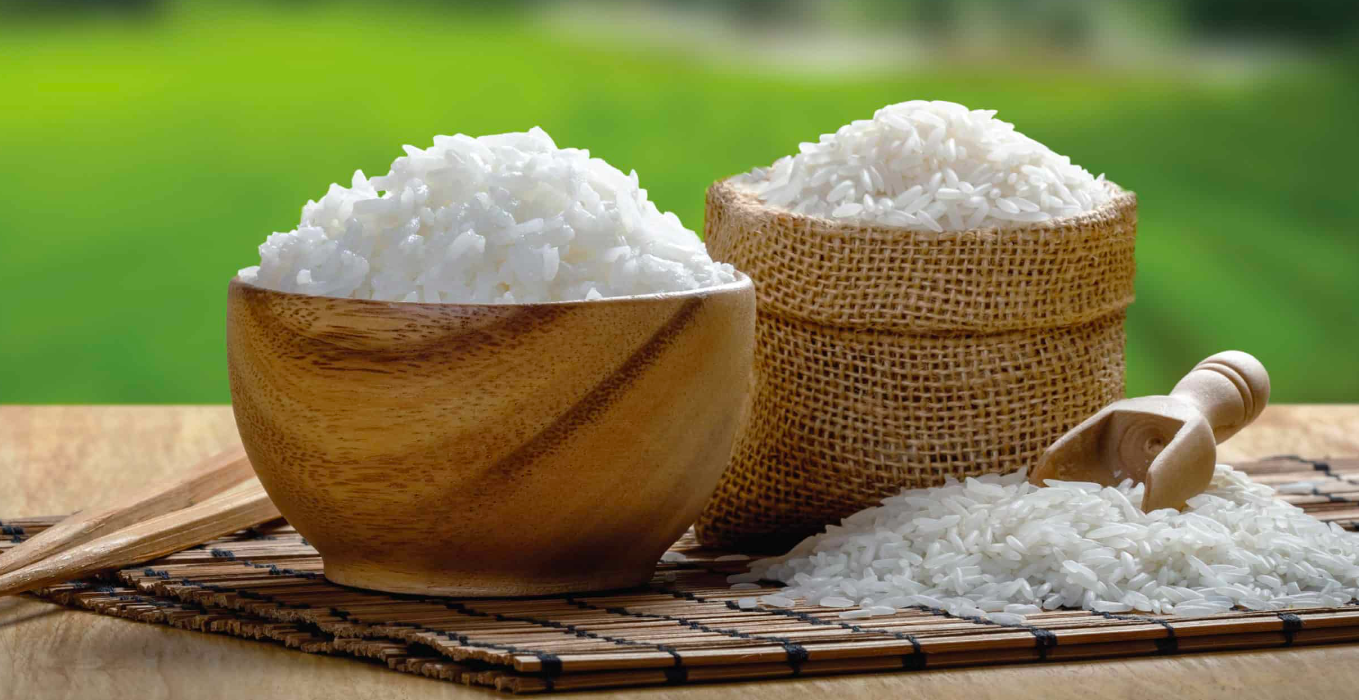Many communities consider rice an unhealthy choice.
White rice is more common than brown rice as it has a longer shelf life and its transportation is easier. White rice is, however, less nutritious.
White Rice has undergone extensive processing. Its hull, the tough protective coating, bran, and germ—the nutrient-rich centre—are all missing. On the other hand, Brown rice, only has the hull removed.

Over 40,000 different types of rice exist, and it is a common food in more than 100 nations. Like paella in Spain, risotto in Italy, arroz rojo in Mexico, bibimbap in Korea, and sushi in Japan. Many nations have their rice dish that represents their national cuisine and culture.
Now we’ll go over some of the reasons how rice could harm you:
White Rice has no Fibre and Nutrients
This table shows how (100 grams) of the different types of rice compare nutritionally when cooked.
| Nutrients | White rice, unenriched | White rice, enriched | Brown rice, unenriched |
| Calories | 123 | 123 | 111 |
| Protein | 2.9 grams | 2.9 grams | 2.6 grams |
| Carbs | 30 grams | 26 grams | 23 grams |
| Fat | 0.4 grams | 0.4 grams | 0.9 grams |
| Fibre | 0.9 grams | 0.9 grams | 1.8 grams |
| Folate | 1% of the RDI | 20% of the RDI | 1% of the RDI |
| Manganese | 18% of the RDI | 18% of the RDI | 45% of the RDI |
| Thiamine | 5% of the RDI | 14% of the RDI | 6% of the RDI |
| Selenium | 13% of the RDI | 13% of the RDI | 14% of the RDI |
| Niacin | 12% of the RDI | 12% of the RDI | 8% of the RDI |
| Iron | 1% of the RDI | 10% of the RDI | 2% of the RDI |
| Vitamin B6 | 8% of the RDI | 8% of the RDI | 7% of the RDI |
| Phosphorus | 6% of the RDI | 6% of the RDI | 8% of the RDI |
| Copper | 4% of the RDI | 4% of the RDI | 5% of the RDI |
| Magnesium | 2% of the RDI | 2% of the RDI | 11% of the RDI |
| Zinc | 2% of the RDI | 2% of the RDI | 4% of the RDI |
Generally speaking, brown rice has a higher vitamin and mineral content than white rice. Enriched white rice, however, has a higher iron and folate content.
Additionally, the amount of antioxidants and essential amino acids in brown rice is higher.
White rice consumption increases the risk of diabetes
According to recent Harvard School of Public Health (HSPH) research, eating white rice frequently may increase the risk of type 2 diabetes.
Sun told Time magazine, “People should try to switch from eating refined carbs like white rice and white bread to eating more whole grains.”
Rice is a quick carb because of its high glycemic index. Rice is quickly converted to sugar in our bodies. As a result, glucose spikes and insulin resistance take place. Eating white rice five times per week increases the risk of type 2 diabetes.
Additionally, rice increased the risk of type 2 diabetes by 11% with each daily serving.
Raise Your Risk of Metabolic Syndrome
A group of risk factors known as metabolic syndrome may raise your risk of contracting illnesses like heart disease, type 2 diabetes, and stroke.
These are some of the risk factors:
- High fasting blood sugar
- Low levels of “good” HDL cholesterol
- High triglyceride levels
- High blood pressure
- A larger waistline
According to research, people who eat a lot of white rice have a higher risk of developing metabolic syndrome. Meanwhile, brown rice consumption has been connected to a reduced risk of heart disease
Effects on Weight Loss Are Conflicting
The research on white rice is contradictory, even though numerous studies have linked refined grain diets to obesity and weight gain.
Few researchers have linked white rice and other refined grain-rich diets to weight gain, belly fat, and obesity, while others have found no connection. White rice-centred diets have also been shown to aid in weight loss, especially in nations where it is a common food.

Whole grain-rich diets, like those that include brown rice, have been shown to promote weight loss and make it easier to maintain healthy body weight over the long term.
Because it is more nutrient-dense. It has more fibre, and has a healthy amount of disease-fighting antioxidants, therefore, the better choice for weight loss.
Ingestion of Arsenic
Even though white rice has less arsenic than brown rice, it’s still advisable to limit your intake and switch up your grains. Amaranth, quinoa, bulgur, and farro are among the alternatives that Consumer Reports research identifies as lower in arsenic and deserving of consideration. The same study discovered that the amount of arsenic in rice can vary depending on the region in which it was grown. White basmati rice from California, India, and Pakistan, as well as sushi rice from the United States, may have lower arsenic contents than other varieties of rice.
The Bottom Line
It’s safe to say that you don’t need to eliminate this carb from your diet after looking at the side effects of eating white rice. A healthy serving of nutrients and energy can be easily and affordably obtained by eating white rice throughout the day. However, it’s crucial to consume white rice in moderation and to include portions of whole grains throughout the week.
Read more: Rice is Good for Health? Know it all!
Citations:
https://www.researchgate.net/publication/348973191_Brown_rice_Nutrition_and_health_claims
https://www.mdpi.com/2077-0472/11/8/720
https://www.ncbi.nlm.nih.gov/pmc/articles/PMC6025443/





